Review for IGPX: Immortal Grand Prix - Season 1 (3 Discs)
Introduction
I don't know why the idea of East-West co-productions in anime sends chills down my spine, as it really shouldn't. After all, my first exposure to anime came through those French Japanese collaborations in the eighties, shows like Ulysses 31 and Mysterious Cities of Gold. Even now, when Western money is invested in anime, the result more often than not will please audiences, and recent years have given us shows like Afro Samurai, Witchblade, Heat Guy J, and Karas. It also allows Japanese companies to make anime for broader audiences, rather than catering to a regular fanbase that demands only fan service, moe, or whatever trope may be the flavour of the week. Not every such collaboration has to be Lady Death or Samurai Gun, or whatever Marvel inspired production may be sinking without a trace at the moment. But still, when I see logos for The Cartoon Network, and Toonami plastered liberally over an anime cover, my heart begins to sink, as if I fear something unique to anime will be diluted and lost in the process of cross-cultural fertilisation. It's one reason why I have steered clear of IGPX: Immortal Grand Prix for so long. That and the whopping great robots.
Of course, what such collaborations bring, is money as well as enthusiasm. IGPX began as a pilot for a mecha combat sports show, which Cartoon Network commissioned Production IG to animate for a presentation. A couple of years later, the concept was reworked into this racing anime, and Production IG's skilful animation got some serious backing from the Cartoon Network, when the English dub cast was revealed to be other than the usual suspects. It isn't every anime that attracts actors like Lance Henriksen, Mark Hamill, Haley Joel Osment, and Michelle Rodriguez to the cast. With that kind of star power, I do get to wonder why IGPX isn't more of a household name, why more fans haven't embraced it, after all I picked up this 26 episode series, in art box form, for £6. Most shows are sold out long before they get discounted that deeply.
It's probably where the drawbacks of co-production arise. With both producers trying to make an animation for their respective markets, and both with creative input, it's where differences arise, and Cartoon Network have no problem with altering the programme for broadcast purposes, as mentioned in the interview on the first disc. Music tracks can be replaced where appropriate, and small edits aren't unheard of to make the dub flow more smoothly. The average viewer could care less about this practice, but today's anime fan would be seething. The US DVD market addressed this by releasing two versions of the show. Toonami released its dub only broadcast version to DVD in boxset form, while Bandai released the original Japanese version with US dub, and extras in seven single volumes. When those eventually went to boxset, it caused no little confusion, when purchasers started getting the Toonami and Bandai versions mixed up. In the UK, there isn't that issue, as Beez alone released IGPX, first on six single volumes, and then in two season boxsets. Naturally they sourced the Bandai versions for their release. Of course all of this may have nothing to do with it. It may just be that IGPX isn't very good…
In 2049, the world's biggest sport is the Immortal Grand Prix, the IGPX. It's so big that an entire city has grown up around it. Massive transforming robots race around a 60 mile elevated track, at speeds approaching 400 miles an hour. It's a team sport, three members in each team, the forward, the midfield, and the defender, and as they compete in the three-lap race, they jockey for position. The first lap is a formation lap, the second is a combat free for all, and the third is pure speed. Team Satomi doesn't exactly flow like clockwork. Takeshi Jin is the impetuous forward, goes in all guns blazing, and often forgets about the teamwork. Amy is the genius midfielder, who's a little timid, but has a good grasp of tactics. She pilots her mech with her pet cat Luca at her side. The hotheaded Liz is the defender, who is liable to take out her frustrations on Takeshi. Backing them up is their substitute pilot, the ever-frustrated River, the team manager Satomi, coach Andrei, mechanic Mark, and medic Jesse. And somehow despite their hit and miss teamwork, they managed to win the IG-2 championship, and got promoted to the IG-1. But the teams they will face in the top flight of the sport will be a whole other challenge, and they may not be up to the task.
The thirteen episodes of Season 1 are presented in this three-disc collection, gathering the first three single volumes of the show into a very appealing art box.
Stage 1
1. Time to Shine
2. Win or Lose
3. Black Egg
4. The Ghost
Stage 2
5. Come Together
6. Cat vs. Dog
7. Spring Has Come
8. I Like You, I Like You, I Love You
Stage 3
9. Holiday
10. Showdown
11. And Then…
12. The Final Battle
13. Into Tomorrow
Picture
You get a 1.78:1 anamorphic transfer here, and as with the majority of anime, it's an NTSC-PAL standards conversion. That means softness of image, blended frames, ghosting, and judder. However, as IGPX is a bright, shiny anime, with plenty of primary colours, and there is a degree of softness and haze deliberately applied to the image, it isn't one of those conversions that particularly annoys. The image is clear and well defined for the most part, and it brings out the animation to excellent effect. That's a good thing, as IGPX gets the full-budget treatment, a fully realised world design, appealing and consistent character designs, and fluidity and detail in the animation that is just shy of theatrical quality. You can see that Production IG have gone to town with this show, with top quality 2D animation, excellent CGI for the robot racing sequences, and toon shaded CGI for the character action sequences, that are almost indistinguishable from the traditional 2D sequences.
Sound
You also get the full-whack with the audio, with DD 5.1 in English, French, and Japanese, with optional translated English and French subtitles, as well as English and French signs only tracks. For once, these aren't just glorified stereo tracks, but full channel affairs that make the utmost use of the soundstage, with audio placement designed for all elements of the animation, not just making the various action sequences and races stand out. The English audio dub is as you would expect, a quality dub, and the added talent really shows. It isn't necessarily in the quality of the acting, it's just in the fact that you get voices different from the usual anime crowd in the main roles, and that alone sets the show apart.
Unfortunately, in my opinion, the Cartoon Network's desire for localisation has crept into the translated English subtitles, which while they aren't dubtitles, they are certainly a looser translation than most would expect. For the English dub, certain character names have been changed. Massa becomes Mark, and Himawari becomes Jesse. But that change also comes through in the subtitles, which makes no sense when you can hear the Japanese characters saying Massa and Himawari. I also think some of the content has been altered for US audiences, again reflected in the subtitles. There's one scene in episode six, where Luca the cat opts for Liz as a soft bed, prompting an argument between her and Amy over who is more comfortable and why. Nine times out of ten, this would degenerate into an argument about breast size, which would then result in the hapless young male, giggling and eavesdropping, being abused by both the girls when caught. It's typical, clichéd anime. But in the dub version, and the subtitles, it's presented as an argument about abs. Which isn't funny at all, and neither does it make much sense in the context of a cat looking for a soft pillow. I don't mind the localisation in the dub, but I don't appreciate it in the subtitles. Of course I might be wrong, and the Japanese cast were arguing about abs.
Extras
You get an art box with a fiery robot on the front (along with several logos), and with Takeshi in partial silhouette on the back. The BBFC sticker can be removed if you want, and there is also a sheet of blurb that can be stored in the box if you so like. The episodes are listed on the inside of the flap. The Amaray style cases of the first three volumes are collected within.
This being Beez, these are multilingual discs, and you have the option of English and French menus when insert the discs. All three discs get animated menus, and I do feel they linger a little long on the animation, instead of getting directly to the option you require.
The trailers across all three discs comprise, Gundam SEED Destiny, Wolf's Rain, Panda Z, My Hime, Planetes, .hack//Legend of the Twilight.
French viewers will get trailers for Ghost in the Shell: Stand Alone Complex: Second Gig instead of Wolf's Rain.
Disc 1
Here you'll find the first part of the original pilot that led to the IGPX series. The smaller IGPX was a series of 5 episodes; you get the first 5-minute episode, which reveals a completely different concept. This is a combat sport that sees the robot teams in hostile terrain, attacking each other with high-powered weaponry to score points. Through underhanded interference, Takeshi, Amy and Liz are surprised to find themselves promoted from the lowest league where they struggle to afford to compete, all the way to the top league. It's an interesting and entertaining addition, but the powers that be have given us English or Japanese audio, with only French subtitles. English fans wanting to watch the original Japanese are out of luck, as are French fans looking for a dub. Since there is little doubt that the Bandai discs would have had English subtitles for this featurette, one of these issues could have been avoided.
Haley Joel Osment (Takeshi) turns up for an interview that lasts 7 minutes, as he talks about voice acting, and his first anime.
The Cartoon Network Producers Interview lasts 20 minutes. Sean Akins and Jason DeMarco, co-writers and co-producers talk about the collaboration with Production IG, and how the show came into existence, as well as how they approached it from a US audience point of view.
They both turn up again on a commentary track for episode 3, along with not-rep for Production IG, Maki Terashima-Furuta. It's a light hearted and informative commentary track that is well worth a listen. The commentaries on these discs come with optional French subtitles only.
Disc 2
The IGPX Original Pilot #2 is here, in which the team gets to the battleground, only to realise that they forgot to buy any weapons. Still, who needs guns for a wargame?
The first interview is with actress Michelle Rodriguez who voices Liz in the English version of the show. She talks about the story and the character for 8 minutes.
Then, ADR Director Eric Sherman from Bang Zoom talks for 13 minutes about his job, putting English words into the mouths of Japanese characters.
Sean Akins and Jason DeMarco return with now-rep for Production IG, Maki Terashima-Furuta, on another commentary track, this time for episode 6. It's more of a scene specific observational commentary.
Disc 3
The IGPX Original Pilot #3, 5 minutes long again, catches up with the team during their opening match, only Amy has gone AWOL.
The sole Interview this time around is with Mark Hamill (Yamma), which lasts 14 minutes. I have to admit that this is the most interesting of the interviews so far, and that's not just because I'm a Star Wars nut. Mark Hamill has a whole lot of experience in voice acting, and is also a self-confessed comic book geek, which helps him put his experiences on IGPX in context. It's well worth a watch.
The final commentary is on episode 10, and once again it features Sean Akins, Jason DeMarco and Maki Terashima-Furuta. This time it's another observational commentary, but a lot more irreverent.
Conclusion
IGPX is what you get when you take a Saturday morning cartoon concept, and infuse it with anime sensibilities when it comes to character and story. It's lightweight and frothy, but has just enough meat to it to engage beyond a trivial episodic level. It's a whole lot of fun in the process as well, and very easy to watch. Besides, when it comes to something as visceral as racing, it's a subject with universal appeal, and in story form can be a lot more attractive than the real thing. The last such anime crossover to make it to UK television screens also covered much the same ground, although Oban Star Racers was aimed at a much younger demographic. IGPX is a lot more grounded than that, there's no fate of the world, ultimate destiny trappings, and it's very much a sports story when it comes to a team's desire to win. But by avoiding the technical details, and concentrating more on character and action, it is in a way even more accessible than Oban.
The technical details do provide a solid core for the story to build on though, and IGPX as described in the story is a wonderfully realised form of racing, with its specific rules and idiosyncrasies. The most obvious of which is that the race is run on an elevated track, with giant transforming robots instead of cars, which appear to skate around the circuit at intense speeds. Because they are robots, it means that there's scope for combat within the race, as the teams try and nobble each other, and knock each other out. For one lap out of three, it appears to be no holds are barred, and neither team is restricted to the moves or technology it may employ. The exception is when the race is yellow flagged, and one of the robots needs mechanical attention, at which point a rolling pit appears and collects the robot, repairs it, and deposits it back on the track, without the race having to pause. Formula 1 would be so much more interesting if the cars could transform into robots mid-race, and beat two shades of tar out of each other.
Team Satomi is the rookie team that somehow makes it out of the second league to the top echelon, where they have to face five of the elite teams, Team Velshtein, Team Sledgemamma, Team Skylark, Team Edgeraid, and Team Black Egg. It's their first year in the top flight, and they'll be lucky just to make it through the first year, but Team Satomi have higher ambitions. Of course that's hobbled by problems getting sponsorship, as well as a team that hasn't quite figured out how to work together. The star of the team is Takeshi, the fast paced forward with a lot of natural talent, who's easygoing and friendly off track, but utterly focused on the track. He does have a tendency to go it alone, which has proved lucky so far. His teammates are Liz and Amy. Liz is more likely to be exasperated by Takeshi's grandstanding, but has a hard-shelled, must win attitude of her own. Yet beneath a tough, tomboyish outlook, she has something of a soft spot for Takeshi. Amy is a more timid but friendly girl, who pilots her mech with her cybernetically enhanced pet cat, Luca. She has something of a lonely if privileged background, and Team Satomi is in some ways her surrogate family. They are led by Satomi, a woman trying to live up to her grandfather's legacy, in an industry where it's hard for her to earn the respect of her peers and her sponsors. The rest of the team all have their secrets, including the easygoing mechanic Mark, and even more so the easier going coach Andrei. It's a very likeable set up, with only the ever-frustrated substitute pilot River, the potential water on the oil fire.
The show also takes the time to develop the characters in the rival teams, although it concentrates more on the lead racers in each, and then again, really only for the eternal bad boys of the racing circuit, Team Sledgemamma, and their scarred leader Yamma, the reigning champions Velshtein and their genius forward Cunningham, and of course team Skylark and their racing Princess Fantine, for whom Takeshi develops romantic feelings. It's also a show that alternates racing action with character development, so we get to learn more about these people when they aren't in their hi-octane modes. It doesn't slip into a soap opera though, and the emphasis is always on keeping things light and fun.
These thirteen episodes constitute the first season of IGPX: Immortal Grand Prix, both in terms of the anime, and in terms of the story, following Team Satomi in their first year in the IG-1 league. We follow their ups and downs, as they compete to excel in the rarefied arena, and as they try to progress both individually and as a team. The downside of such a broad palette of characters, and a show that is practically half racing action, is that some of the characters get hard done by. For this first season, the focus really is on Takeshi, and while Liz gets a fair amount of screen time, Amy is a little hard done by. With any luck, the series with develop more robustly in terms of the characters in the second season. Ultimately, what may be IGPX's greatest strength may also be its weakness. It's a fun, ephemeral, joy of a series. Delightful characters, light touch storytelling, and races that will have you on the edge of your seat, even though they are scripted, all constitute tremendous entertainment. But, when all is said and done, it is really a Saturday morning cartoon in anime clothing. If you are pressed on what may be your favourite anime, IGPX won't come to mind, it won't even be in your memory. IGPX is fun, forgettable yes, but fun.
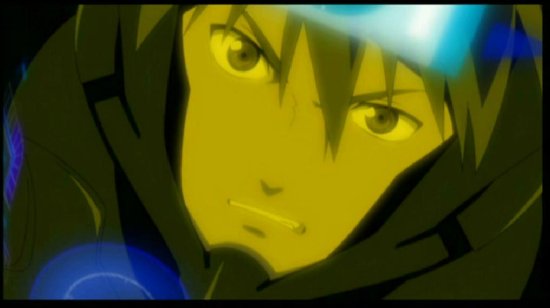
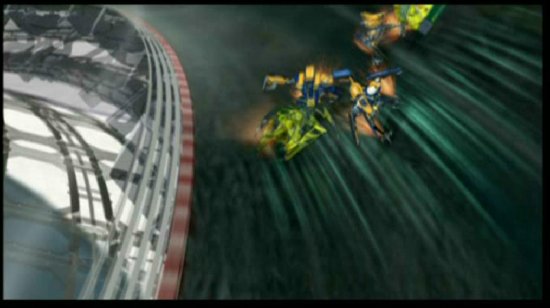
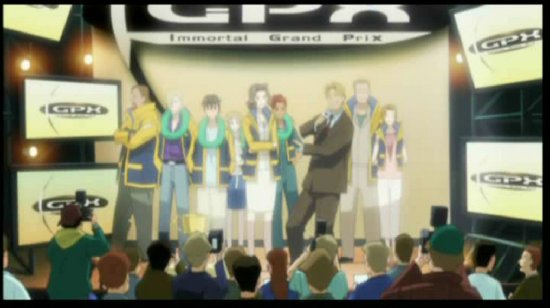
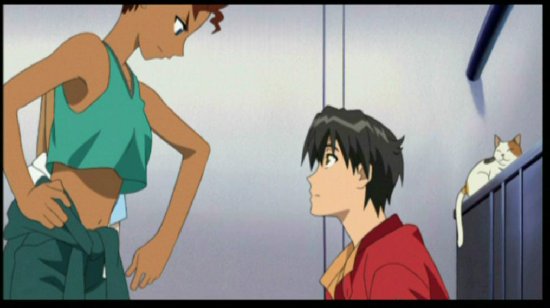

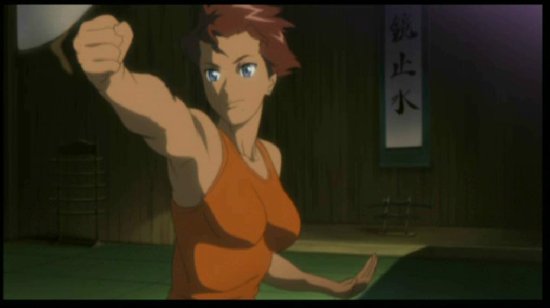
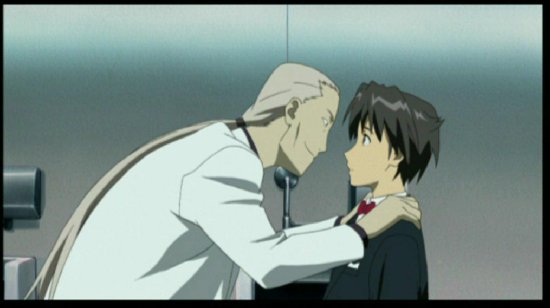
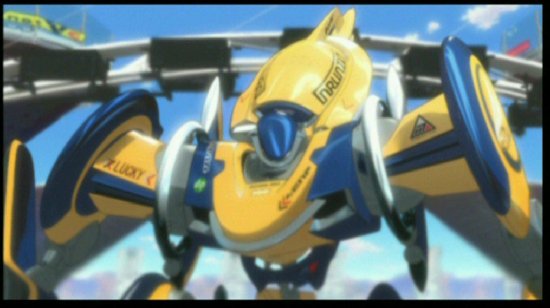

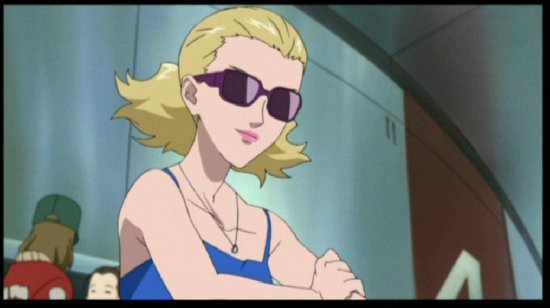
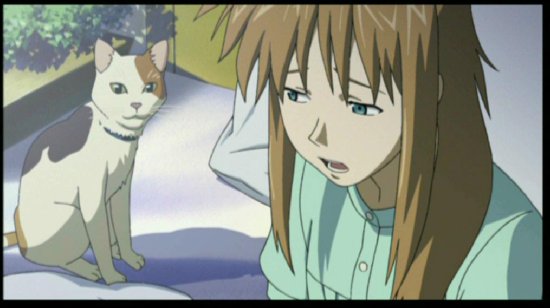
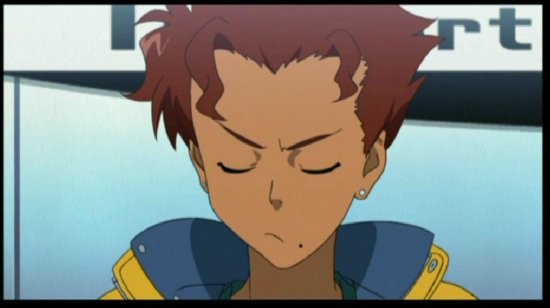
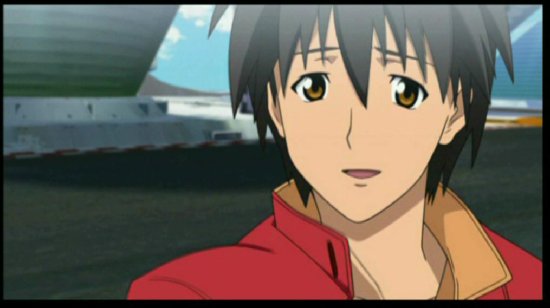
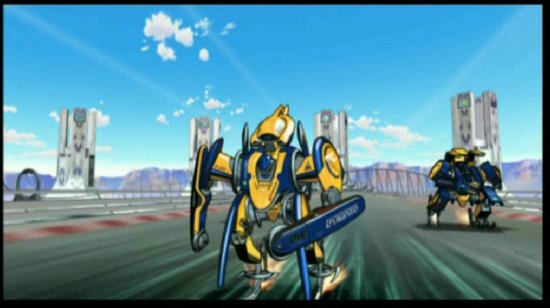
Your Opinions and Comments
Be the first to post a comment!